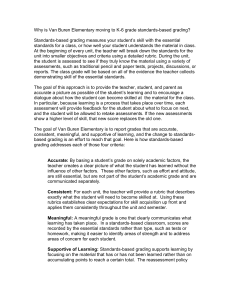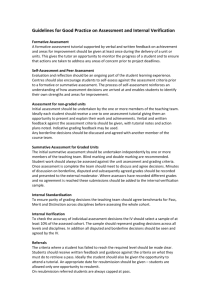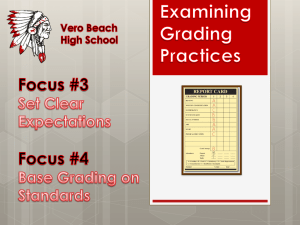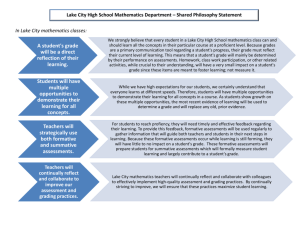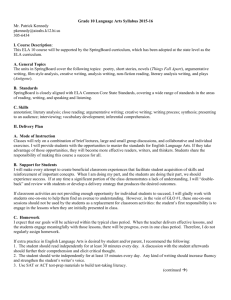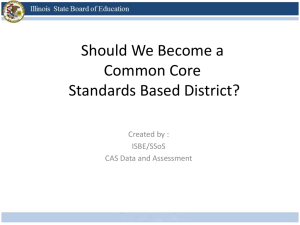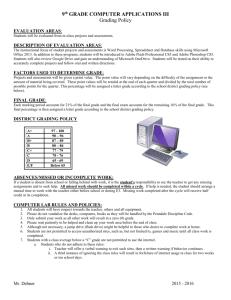Standards-Based Grading - Parkway C-2
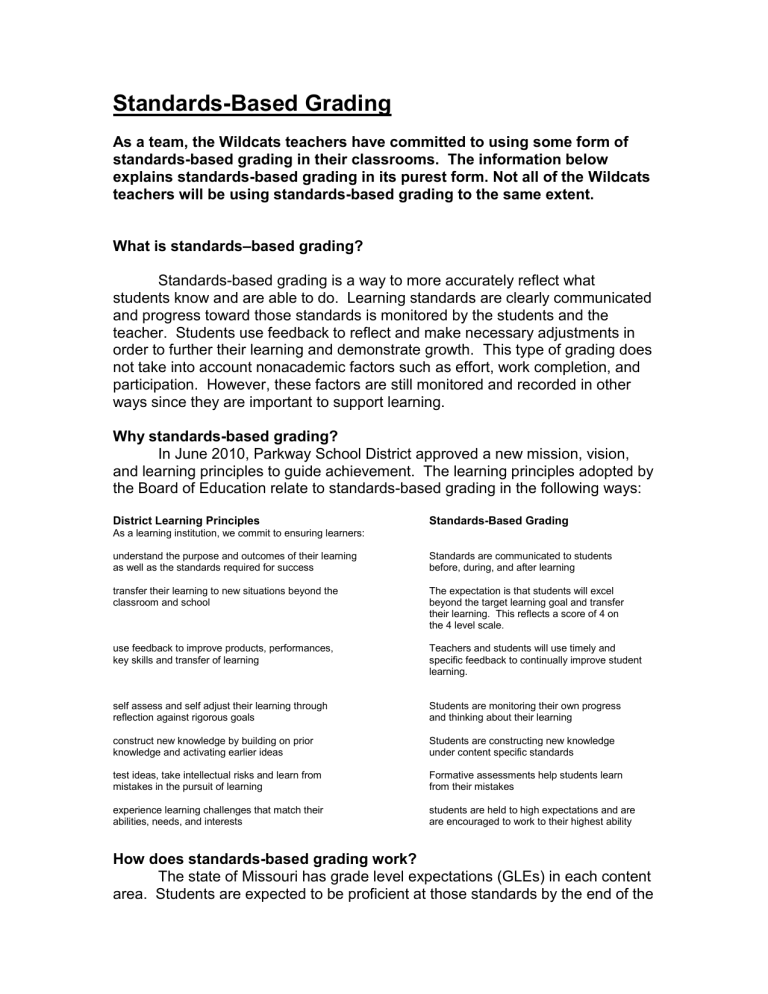
Standards-Based Grading
As a team, the Wildcats teachers have committed to using some form of standards-based grading in their classrooms. The information below explains standards-based grading in its purest form. Not all of the Wildcats teachers will be using standards-based grading to the same extent.
What is standards
–based grading?
Standards-based grading is a way to more accurately reflect what students know and are able to do. Learning standards are clearly communicated and progress toward those standards is monitored by the students and the teacher. Students use feedback to reflect and make necessary adjustments in order to further their learning and demonstrate growth. This type of grading does not take into account nonacademic factors such as effort, work completion, and participation. However, these factors are still monitored and recorded in other ways since they are important to support learning.
Why standards-based grading?
In June 2010, Parkway School District approved a new mission, vision, and learning principles to guide achievement. The learning principles adopted by the Board of Education relate to standards-based grading in the following ways:
District Learning Principles
As a learning institution, we commit to ensuring learners: understand the purpose and outcomes of their learning as well as the standards required for success transfer their learning to new situations beyond the classroom and school use feedback to improve products, performances, key skills and transfer of learning self assess and self adjust their learning through reflection against rigorous goals construct new knowledge by building on prior knowledge and activating earlier ideas test ideas, take intellectual risks and learn from mistakes in the pursuit of learning experience learning challenges that match their abilities, needs, and interests
Standards-Based Grading
Standards are communicated to students before, during, and after learning
The expectation is that students will excel beyond the target learning goal and transfer their learning. This reflects a score of 4 on the 4 level scale.
Teachers and students will use timely and specific feedback to continually improve student learning.
Students are monitoring their own progress and thinking about their learning
Students are constructing new knowledge under content specific standards
Formative assessments help students learn from their mistakes students are held to high expectations and are are encouraged to work to their highest ability
How does standards-based grading work?
The state of Missouri has grade level expectations (GLEs) in each content area. Students are expected to be proficient at those standards by the end of the
grade level. Because of that, we carefully monitor student progress toward those targets. Standards- based grading allows us to design formative and summative assessments which will give students, parents, and teachers timely and specific feedback on that progress.
A 4 level scale is used to measure student work. The 4 level scale should be viewed as a continuum on which students are continually moving toward proficiency and beyond.
Advanced
Proficient
Basic
Below Basic
Scale Score
4.0
3.5
3.0
2.5
2.0
1.5
1.0
Below 1.0
Every learning goal (standard) has a rubric that demonstrates the benchmark for proficiency.
Achievement level 4 Advanced 3 Proficient 2 Basic 1 Below Basic
Description of student In addition to The student The student
Performance
With help, the
exhibiting level-3 demonstrates no demonstrates no student
performance, the major errors or major errors or demonstrates partial
student omissions regarding omissions regarding knowledge of some
demonstrates in- any of the the simpler details of the simpler and
depth inferences and information and/or and processes, but complex details and
applications that go processes (simple or major errors or processes.
beyond what was complex) that was omissions regarding
taught in class. explicitly taught in the more complex
class ideas and processes.
Student fri endly “I know it even “I know it just the “I know some of the “With some help, I better than my way my teacher simpler stuff but still can do some of it.” teacher taught it.” taught it.” struggle with the harder parts.”
Percentage breakdown for
Infinite Campus
100% 90% 70% 60%
Adapted from :
Marzano, R.J. (2010). Formative assessment and standards-based grading:
Classroom strategies that work.
Bloomington, IN: Marzano Research Laboratory.
What are formative and summative assessments?
A formative assessment gives the student and the teacher useful information about their present level as compared to the target learning goal.
Students and teachers can use this information to make adjustments toward the learning goal. In this way, formative assessment is an evaluation for learning.
Some examples of formative assessments include but are not limited to: conferencing, performance tasks, pieces of the writing process, homework, quizzes, assignments, observations, exit slips, warm up questions, discussion, etc.
A summative assessment is given at the end of instruction. This is a final evaluation of the learning that occurred during the unit. Some examples of summative assessments include but are not limited to: chapter or unit tests, performance tasks, projects, portfolios, and final drafts of papers.
Why aren’t formative assessments calculated in the final grade?
Mistakes are part of the learning process. Students should not be penalized for their early attempts to show understanding of a new topic. With adjustments made along the way, students will be ready to demonstrate how much they have learned on the summative assessment. Since all formative assessments are designed to properly prepare students for the summative assessment, failure to complete formative assessments will most assuredly hinder student success.
How will grades look in Infinite Campus?
Infinite Campus is designed to work well with a traditional grading system.
In order for Infinite Campus to work with a standards-based system, some things will look different than you are accustomed to them looking. Under the formative assessment category, you will see scaled scores ranging from 1 to 4. Under the summative assessment category, you will see the equivalent percentage score.
This is so the software will assign the appropriate letter grade for the student.
If a student earns a 3, for example, this is not a 75% as it is under the traditional system. This should not be viewed as earning 3 points out of 4.
Instead, a 3 equates to a 90% because the student has demonstrated proficiency of the target learning goal.
What are the roles of the teacher, student, and parent in standards-based grading?
The teacher provides clear expectations for students, offers formative assessment opportunities, gives meaningful feedback, provides assistance to students in self-monitoring and making learning adjustments.
The student uses teacher and peer feedback to adjust learning and uses selfreflection to guide improvement.
The parent should ask the child the following questions: What are you learning?
What can you do well? What are you still struggling with? What are you doing to get better?

